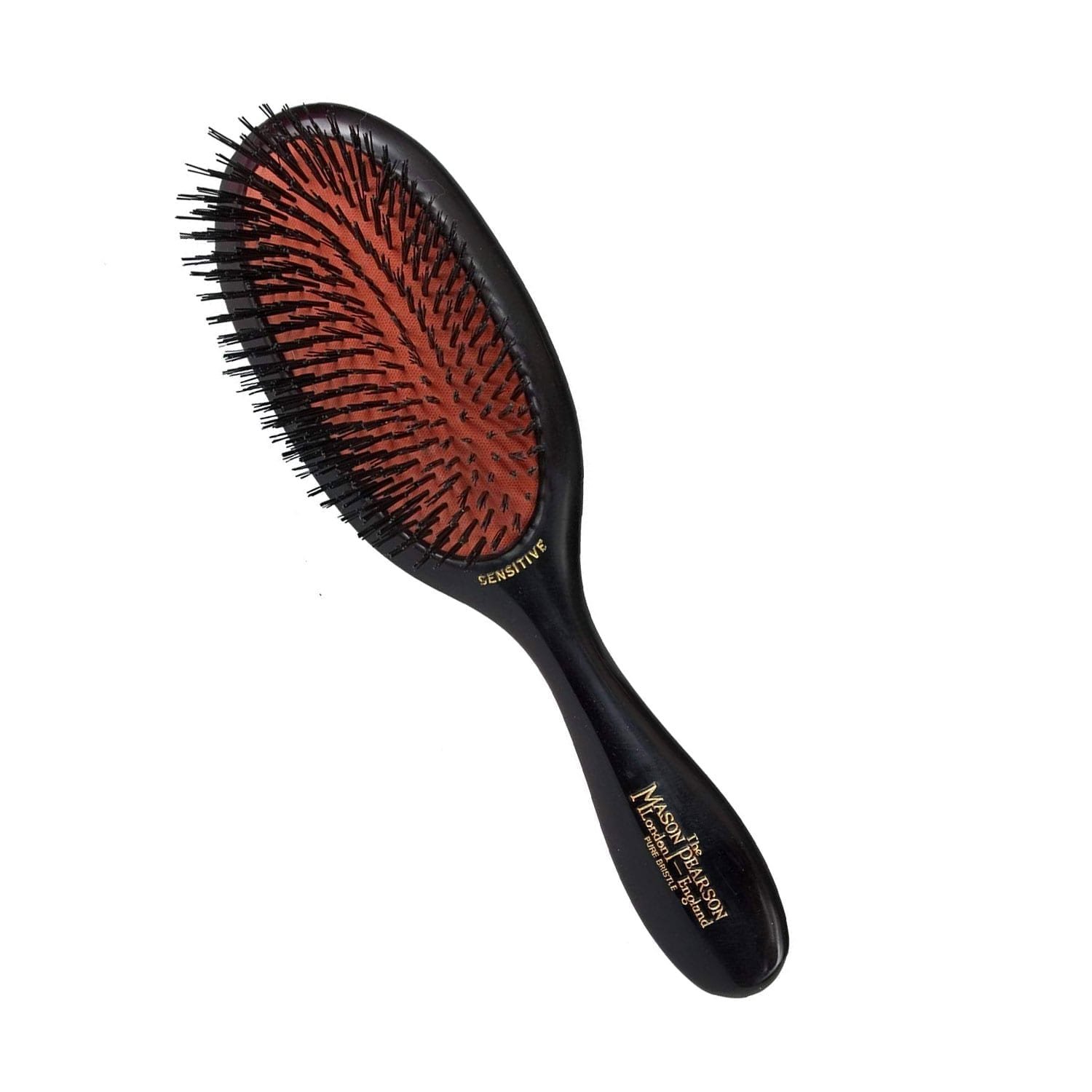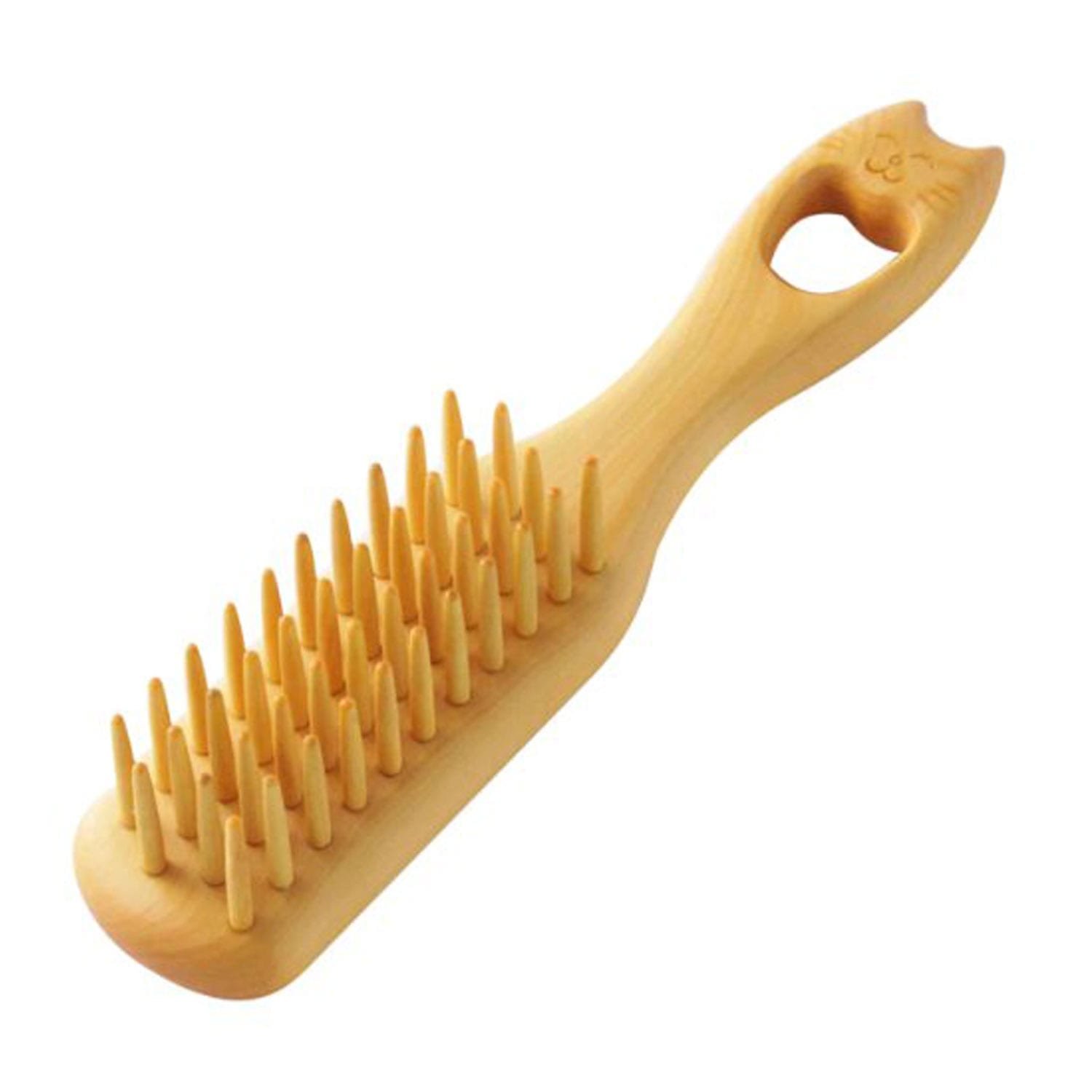THIS IS HOW OFTEN EXPERTS SAY YOU SHOULD BRUSH YOUR HAIR (AND WHY)
The Sunday Edit asks David about the finer points of hair brushing
Jessie Quinn
(read full article here)
We might run a comb through deep-conditioned hair in the shower or use a round brush to achieve that perfect at-home blowout, but should we run bristles through our strands more than the usual style or post-rinse detangle? According to experts, twice a day is ideal. “Once in the morning and once in the evening before bed,” says David Adams, a consultant trichologist at FOURTEENJAY in New York City. That said, the recommended frequency of hair brushing is also determined by hair length and texture. “Curly hair is different [than straight hair]. Most of the time, people with curly and highly textured hair only brush their hair when it is time for a shampoo — not every day,” Adams explains. Those with long hair might benefit from brushing the hair three times a day (morning, lunchtime and before bed) to avoid any midday mats.
Why do we brush our hair? Find out the benefits of brushing — plus the types of brushes we should all have in our arsenal — ahead.
The Benefits of Brushing
You might be quick to reach for a hairbrush when a pesky knot shows face, but detangling is only half the benefit of brushing your strands. “Brushing hair is usually for two reasons: To detangle or to brush for shine and health,” says Adams. “The sebaceous glands produce oil to lubricate the scalp and hair, brushing is a good way to distribute the natural oils through the hair to the ends, resulting in shiny hair after brushing,” he adds. Your roots will even get less oily and you won’t need to use as much dry shampoo. On top of that, we lose an average of 100 hairs per day, so “brushing the hair is a good way to remove the loose hair.”
In addition to brushing for hair health and sleek, tangle-free strands, the scalp can also benefit from a good comb-through. Adams suggests giving the scalp a thorough brush before shampooing. Using an exfoliating brush like the Aveda Pramasana Exfoliating Brush, Adams says to “move [the brush] all around the scalp in circular movements,” starting at the front hairline and working your way around until you cover your entire head. “Hair is fed by the bloodstream and brushing the scalp encourages blood to rise to the surface of the scalp, causing micro-circulation. This increases blood flow to the hair follicle, which in turn stimulates hair growth.” He also notes that flipping your head upside down can increase blood flow to the scalp, which may promote hair growth.
What Happens if You Brush Too Much?
With its impressive benefits, it is hard to believe that there is such a thing as too much brushing. Adams says this is particularly true when using a plastic brush or brushing too vigorously. “Brushing the hair too much may cause friction and damage the cuticle [aka the outside layer of the strand] this, in turn, causes breakage and split ends,” he explains. “If the hair is sensitive due to chemical services, the hair will already be porous and damaged so extra caution is advised when brushing. Naturally fine and weak hair must be brushed carefully,” he adds.
As a rule of thumb, Adams says to stick to that twice a day recommendation — unless you have curly or ultra-textured hair, then brushing before shampoo is best. However, “people with curly [or] highly textured hair [should] not brush their hair very often if they like to keep it in the natural texture,” he notes. If you love your curl and texture, Adams recommends laying off the hairbrush, as “it will take out the curl.”
Proper Brushing Techniques
When it comes to combing through the hair, it is all about how you do it. “The classic technique of brushing hair — head down, bending from the waist, slowly and gently brush from the nape of the neck, up through the sides of the crown, slowly working to the front of the head. Then, stand up straight and repeat the whole process — is best,” explains Adams. “If you have long hair, however, work on the ends first so you don’t move the knots down by starting at the scalp.”
Adams warns against brushing hair while wet. “When hair is wet, it will stretch to three times its original length and return to normal when dry,” he explains. “If the hair has been damaged by chemical treatments or if the hair is naturally fine or weak, brushing when wet may stretch the hair and break it,” he adds. Should you wish to brush your hair when wet, he says “it is always better to apply conditioner in the shower and use a wide tooth comb to comb out the hair, then rinse and comb again.”
Hair Brush Lineup
For the most part, we need a brush for detangling, a brush for styling, and a brush — or comb, rather — for wet strands. And, brush care is equally as important as the type of brush you use. “Brushes should be cleaned at least once a week,” explains Adams. “Depending on the type of brush, remove hair by using a comb, cotton swab, or an old toothbrush,” he adds. As for the actual cleaning process, Adams says any gentle cleansing product (such as liquid soap or even shampoo) will work. To clean, dampen the brush with lukewarm water and apply the cleaning solution. Like your scalp, lather the bristles and then rinse with warm water. Make sure to dry your brush before using again and follow up with a disinfectant. “Gentle disinfectants come in liquid or spray form,” notes Adams. The same applies when you visit a hair salon or blow dry bar — make sure the tools are disinfected before your styling or blowout begins.
Another tip for keeping your brushes clean and in tip-top shape? “Never let anyone use your brush or use anyone else’s.” Using someone else’s brush (or sharing yours) can add bacteria, oil, and other impurities to your hair and scalp. That said, if you happen to share, Adams says “make sure it is thoroughly cleaned before and after use.”
The types of hair brushes for your arsenal
Boar Bristle Brush
“If brushing for health, shine and detangling, then a boar bristle brush is required,” explains Adams. Brushing with boar bristles can help gently break up tangles and knots while distributing natural oils and promoting a sleeker appeal. When it comes to boar bristle brushes, Adams turns to his trusted Mason Pearson. Albeit on the pricey side of the spectrum, it’s one that will last you a very long time.
Styling Brush
“If the brush is for blow drying and hair styling, then different brushes will be needed,” explains Adams. “This will be based on styling regimen — a Denman brush for straighter hair, paddle brush for wrap drying, or a round brush to create volume, waves and curls,” he adds. As far as stylish brushes are concerned, Adams prefers the Denman Medium 7 Row Stylish Brush for straight styles and the R Session Tools 2” Boar Bristle Round Ceramic Brush for blowouts and volume.
Comb
Adams suggests adding a wide tooth comb to your arsenal, too. The spaces in a wide tooth comb allow for gentle brushing that does not pull or damage strands. In addition, these combs can help gently brush wet, conditioned hair in the shower without causing breakage. Whether you comb in the shower or after a good rinse and repeat, Adams always relies on the Pureglo Anti-Static Horn Wide Tooth Hair Comb.
Wet Brush
If you have to reach for a brush instead of a comb for wet strands, Adams recommends a Wet Brush, which is made specifically for brushing damp strands. Adams swears by the Wet Brush Classic Detangler.
Japanese Tsuge Wood Brush







